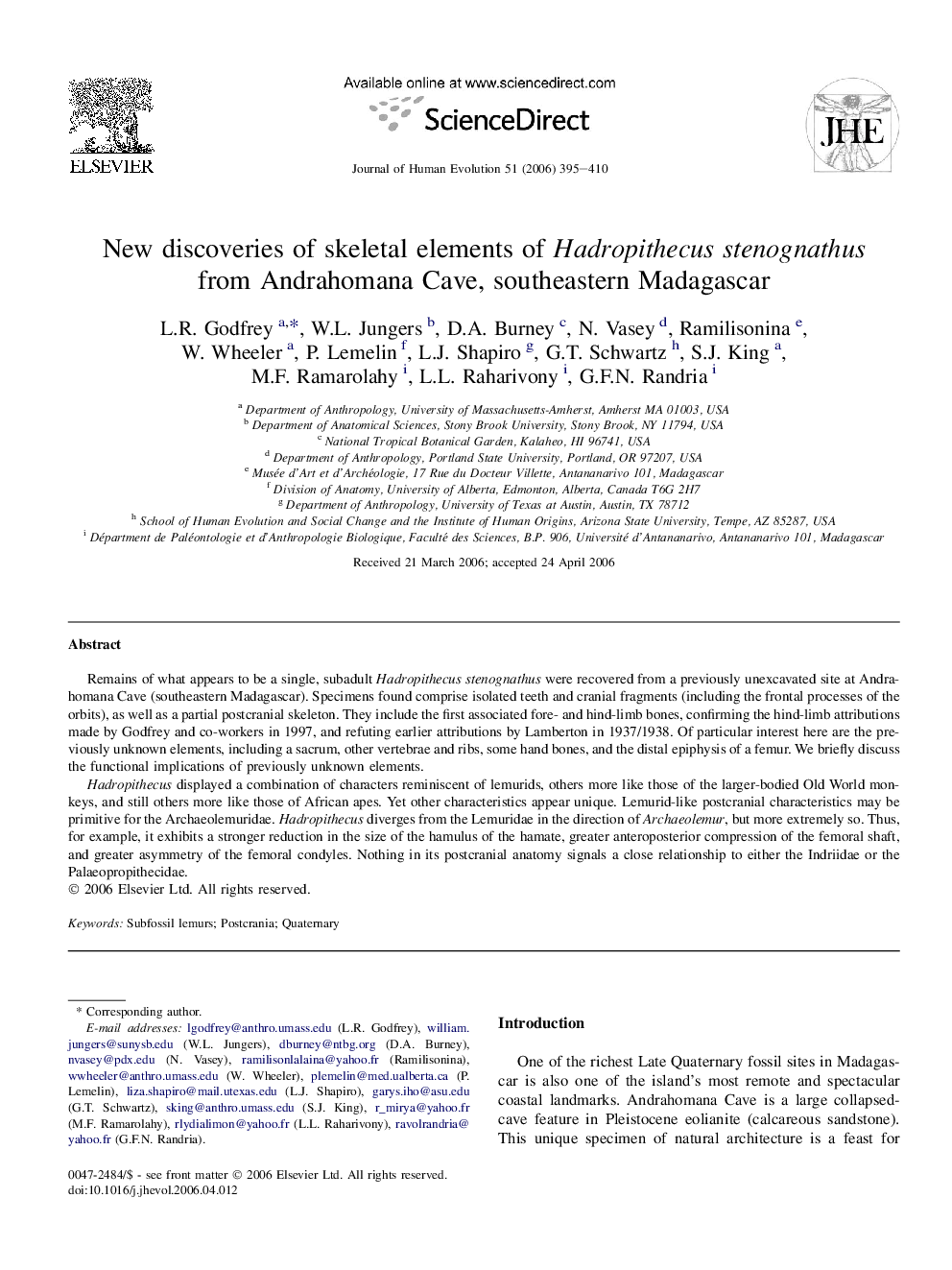| Article ID | Journal | Published Year | Pages | File Type |
|---|---|---|---|---|
| 4557112 | Journal of Human Evolution | 2006 | 16 Pages |
Remains of what appears to be a single, subadult Hadropithecus stenognathus were recovered from a previously unexcavated site at Andrahomana Cave (southeastern Madagascar). Specimens found comprise isolated teeth and cranial fragments (including the frontal processes of the orbits), as well as a partial postcranial skeleton. They include the first associated fore- and hind-limb bones, confirming the hind-limb attributions made by Godfrey and co-workers in 1997, and refuting earlier attributions by Lamberton in 1937/1938. Of particular interest here are the previously unknown elements, including a sacrum, other vertebrae and ribs, some hand bones, and the distal epiphysis of a femur. We briefly discuss the functional implications of previously unknown elements.Hadropithecus displayed a combination of characters reminiscent of lemurids, others more like those of the larger-bodied Old World monkeys, and still others more like those of African apes. Yet other characteristics appear unique. Lemurid-like postcranial characteristics may be primitive for the Archaeolemuridae. Hadropithecus diverges from the Lemuridae in the direction of Archaeolemur, but more extremely so. Thus, for example, it exhibits a stronger reduction in the size of the hamulus of the hamate, greater anteroposterior compression of the femoral shaft, and greater asymmetry of the femoral condyles. Nothing in its postcranial anatomy signals a close relationship to either the Indriidae or the Palaeopropithecidae.
